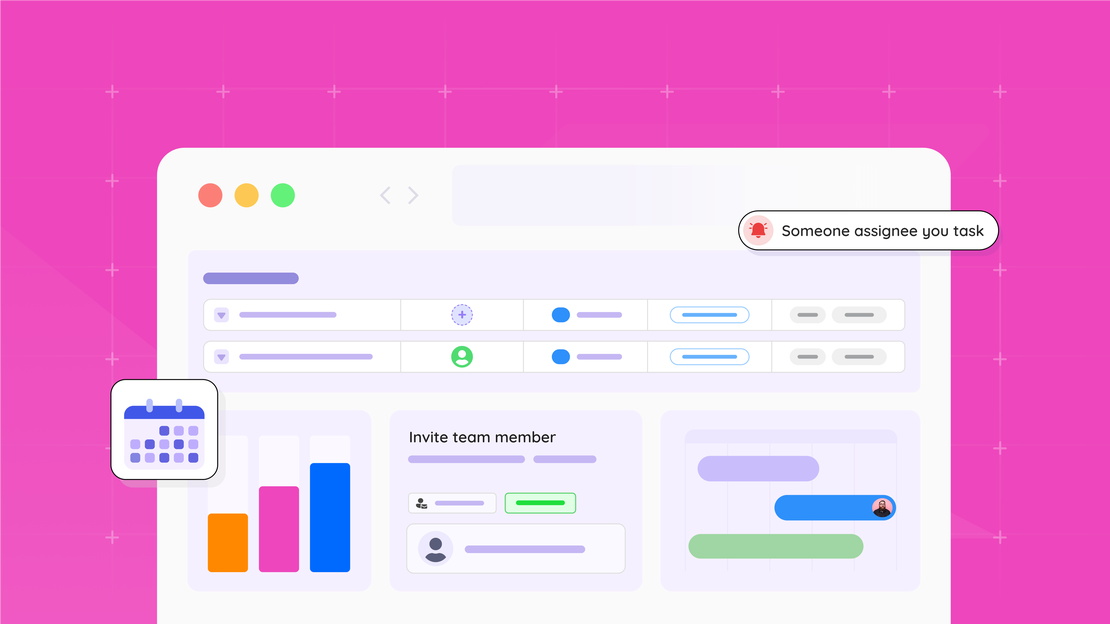Project Planning Tools: How to Use Them Effectively

Table Of Contents
What are project planning tools?
Project planning tools consist of software programs that allow you to manage projects in a structured way. One example is FlowQi CRM, our online CRM tool that is linked to our project management and task management tools.
This allows you to:
- organize tasks and deadlines,
- enable teams to work together,
- manage resources (such as time, budget, or people),
- and keep track of the progress of the project.
Other examples of project planning tools are Trello and Asana, two free online tools. These are great if you want a straightforward way to organize tasks and projects, whether you’re working solo or with a team. If you need features like integration with your CRM, these tools have limitations.
FlowQi CRM, on the other hand, can be used by any type of organization, from freelancers to large organizations, and is suitable for any budget. Want to see how it works in practice? Sign up for our BETA Program and try all our software for free.
Why are project planning tools important?
Projects often experience delays or fail due to poor communication. That costs money, time, and energy. Of all mega-sized projects, only 0.5% turn out well. With the right project planning tools, you can significantly increase your chances of success.
The benefits of these tools are that you can:
- communicate clearly about who does what and when,
- align expectations and deadlines,
- identify bottlenecks at an early stage, and
- maintain an overview, even with multiple ongoing projects.
Why CRM, project management, and task management in one tool?
FlowQi CRM is linked to project management and task management by default. We did this because a project planning tool works even better when combined with a CRM system and a task management tool.
This allows sales, support, implementation, and management to work in a single environment, which significantly increases the chances of success. Among other things, this gives you the following benefits:
- CRM + project management. Linking customer data, quotes, and appointments directly to your projects ensures you’ll always know where agreements were made.
- Project management + task management. Large plans require a clear division of tasks. By breaking your project down into manageable tasks and steps (and assigning them), you prevent projects from getting stuck in the planning phase.
- CRM + task management. Does a customer have a question? Then you can immediately convert it into a task. This way, communication does not get stuck in emails, but real action is taken.
5 Project management mistakes and how to avoid them
Project planning tools are useful for the success of your project, but it’s just as important to know which mistakes are common in project management and how you can avoid them.
Here are some common mistakes.
1. Lack of clear goals and expectations
Clear objectives form the basis of your project. If you don’t have them, it can lead to everyone having a different idea of the desired end result. This can lead to miscommunication, delays, frustration, and work done twice.
Therefore, start each project with a short and clear project briefing. Document what the goal is, what is needed to achieve it, who is responsible for what, and when the project will be considered successful.
2. No clear division of tasks
If everyone is only slightly responsible, no one knows exactly what they have to do. Tasks are forgotten, duplicated, or only tackled when it is too late. Such a waste!
To prevent that from happening, use a project planning tool with task management, such as FlowQi. Break the project down into concrete tasks, assign them to the right people, and set deadlines. And check regularly to see if everything is on schedule.
3. Poor communication during the project
Do you often communicate via email? Or WhatsApp? If so, how often do you have to search for information? If you communicate using separate tools, everything becomes fragmented. People may miss crucial updates or think that something has already been taken care of.
Instead, choose one tool and one central place for all communication about the project. Set fixed times when you get together, such as a daily/weekly short call or stand-up meeting.
4. No room for changes or problems
This is a common mistake seen in large organizations that have not yet implemented Agile methodologies. Their project is set in stone. When something changes, no one knows how to deal with it. People panic and the project grinds to a halt.
So work with a flexible schedule that allows for adjustments. Discuss risks in advance and build margins into your time and budget. Your project and schedule can also be easily adjusted in a digital tool such as FlowQi.
5. No evaluation afterwards
Mistakes are bound to be made in projects. And that’s fine, because we can learn from mistakes. However, if you don’t evaluate afterwards, it may not be clear to everyone what went well and what could have been better. You may end up making the same mistakes again in the next project!
Therefore, always schedule an evaluation after completing the project. Write a short report and save it with your project in your project planning tool.
Project planning tools give your project a chance at life
Give your projects the life they deserve and choose the right project planning tools. Sign up for our BETA Program and discover for yourself (for free!) what FlowQi can do for your project management.